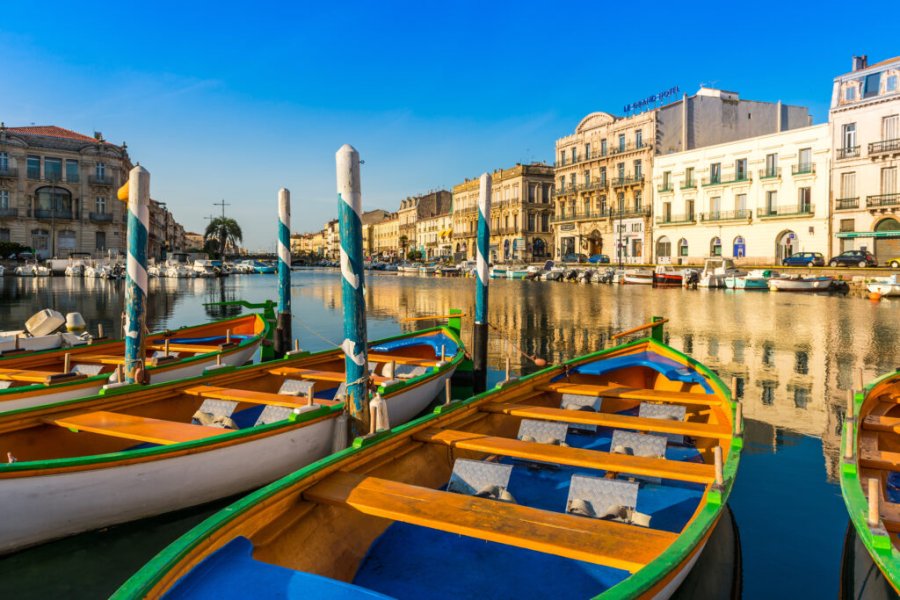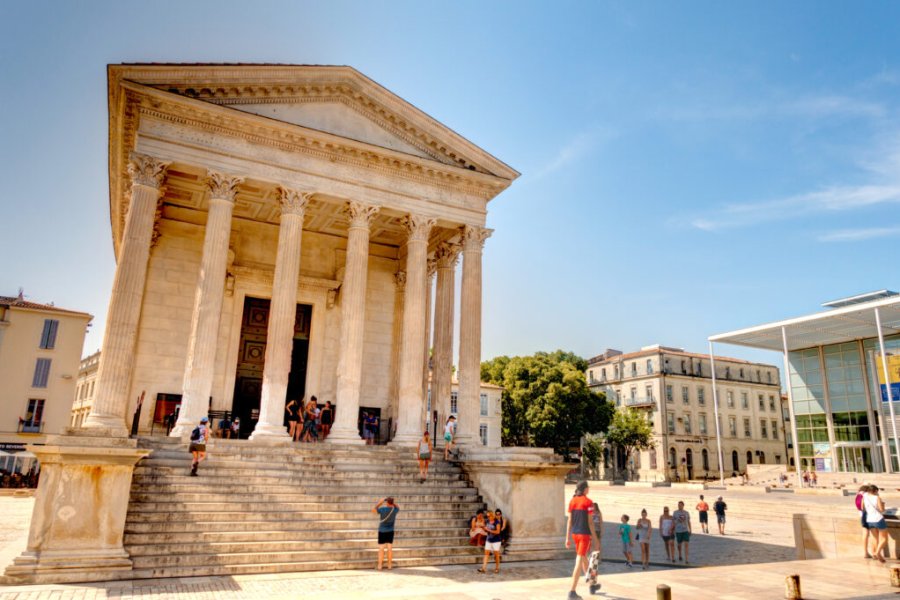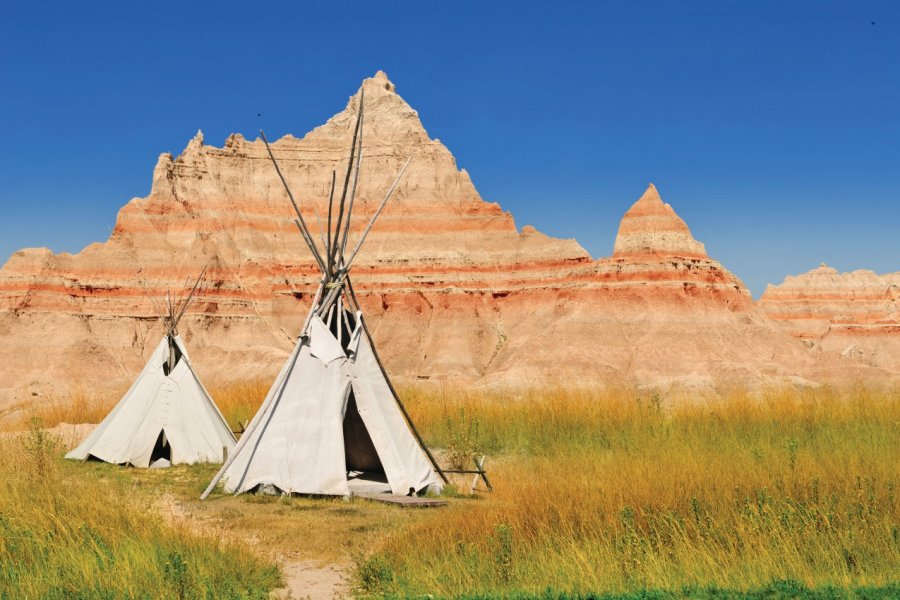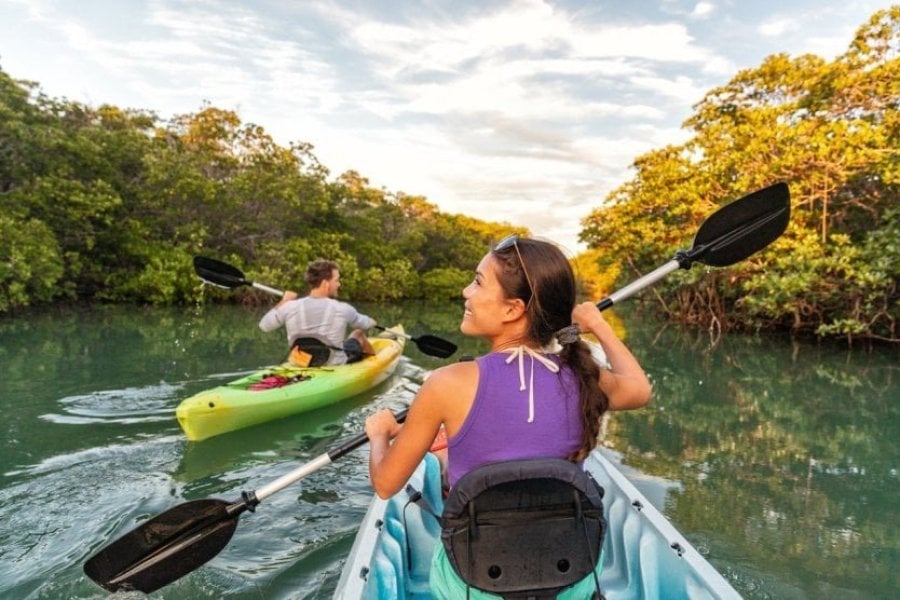Travel Guide Badlands National Park
Find an accommodation
Advertising
Named "Mako sica" or "bad land" by the Lakota, the park takes its name from its extreme temperatures, its rugged terrain and the lack of water that makes it a difficult place to grow. Later, the French-Canadian fur trappers will call it "bad land to cross." Difficult to exploit in the past, these non-standard reliefs shape unusual and spectacular landscapes that now make it an essential tourist attraction.Lost in the middle of South Dakota's desert campaign, the park stands out from all other national parks through its sedimentary landslides with uneven erosion, multicolored dyes, deep gorges and vast grasslands. In addition to the Badlands itself, the park brings together the largest prairie grassland territory in the US, the Great Plains.The most touristic part of the 982.4 km 2 national park, between the Cheyenne rivers in the north and White to the south, focuses on its northern part. The route to be considered is the entry to the Northeast level with a break at Ben Reifel Visitor Center, and the crossing from east to west.GeologyPark formation begins in the upper Cretaceous era almost 75 million years ago. The region is then covered by a shallow sea and the accumulation of sediments (mainly black clay) gives rise to rocky masses that are submerged then during the uprising of the zone. The following periods will all bring their lot of sediment and fossils whose nature and color vary according to climate and whose layers and erosion shape the shredded reliefs of the park sometimes marked by lunar air, sometimes striated with multicolored rocks. Among the different layers that can be observed: sandstone layers, ochre layers formed of fossils, a volcanic ash layer, among others. Many fossils were also discovered in the park showing geological periods, such as alligators fossils and many mammals.HistoryThe Amerindians are the first inhabitants of the region, they live in game hunting. The Sioux arrived more recently, 150 years ago, pushing the first inhabitants to the north. For their part, Europeans settled there at the end of the nineteenth century, forcing natives to live clothed on reserves. At that time, the leader Wovoka, launches the spiritual movement of the Ghost Dances (dances of spirits) that consists of dancing several days during the period to hunt the white man of the Amerindian lands. One of the latest Ghost Dances takes place in Badlands Park.Farmers arrive later than in other regions of the Rocky Mountains due to difficult weather conditions and poor soil. While agriculture works for a long time, the early twentieth century is marked by several natural disasters, including dust storms and devastating waves of grasshoppers that will lead to the desertion of most farmers. Since the creation of the park as a national monument in 1939 and then national park in 1978, tourism has become the main activity of the region.ClimateThe park climate is particularly variable and unpredictable, especially in mid-season. There are still hot and dry summers marked by a few stormtelling and severe rains, cold winters and snow. Temperatures can be extreme from -4 ° C to 47 ° C and the wind is particularly strong.NatureThe park is populated by almost 40 species of mammals, the smallest living in the prairies, and the largest refuge in canyons and wooded parts during periods of snow or wind. You can observe, among other things, bison and many cervids. Predators are also present in the park such as pumas, lynx or coyotes as well as several species of birds, amphibians and reptiles such as snakes and turtles.
What to visit Badlands National Park?
Suggested addresses Badlands National Park
Weather at the moment
Advertising
Organize your trip with our partners Badlands National Park
Transportation
Book your plane tickets
Car Rental
Boat rental
Accommodation & stays
Find a hotel
Holiday rental
Find your campsite
Tailor-made trip
Immersion travel
Services / On site
Activities & visits
Find a doctor
Find unique Stay Offers with our Partners
Pictures and images Badlands National Park
Featured articles Badlands National Park
Other destinations nearby Badlands National Park
25 km away









